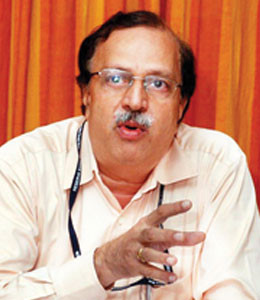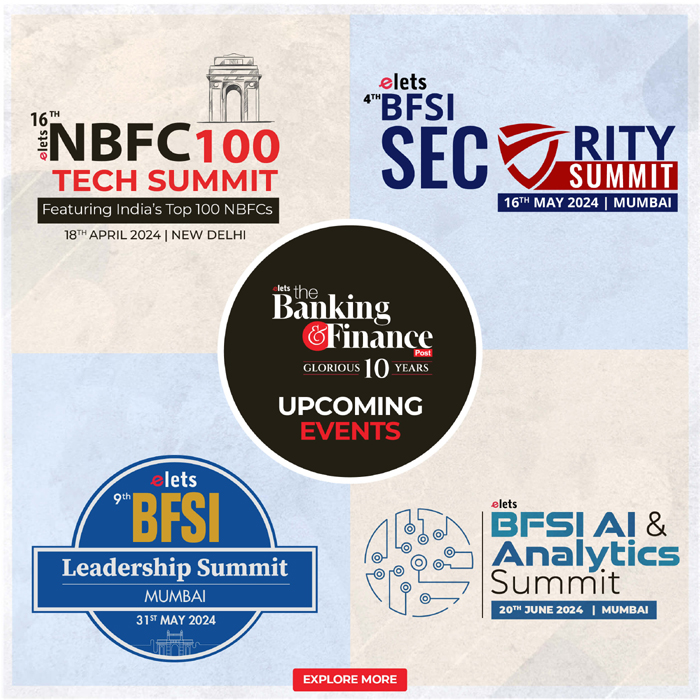Technology adoption in banking sector improves efficiency and provides convenient services to customers at affordable costs, insists Dr A S Ramasastri, Director, Institute for Development and Research in Banking Technology (IDRBT), in conversation with Sneha Mejari of Elets News Network (ENN)
In the last one year, there has been a huge shift technologically in the banking sector as a whole. How do you perceive it?

Director, Institute for
Development and Research in Banking Technology (IDRBT)
Initiation for technology adoption started in a big way when commercial banks went for CBS (Core Banking System), making routine transaction processing and balancing of bank’s book convenient. During the recent past, digital wallets and mobile payments have also become popular in India.
In fact, in the days ahead, the real push is expected from initiatives like Digital India. The ‘Gyan Sangham’ meeting that Prime Minister Narendra Modi had with public sector banks, has given focus to digitising of customer-facing processes and improving operational efficiencies. More importantly, the expectations from new payment banks have added energy in public, private and cooperative banks to deliver more through digital channels. In the next three to five years, we are likely to see an increased adoption of Mobile Banking, Cloud Computing and introduction of more products on ATM kiosks.
Technology adoption in banking sector should be for improving efficiency and providing convenient services to customers at affordable costs. At the same time, without proper awareness and skill sets, banks and their systems are prone to become vulnerable and exposed as there have been increasing trends of cyber attacks and fraud, which have put the banks on high alert. Thus, banks also need to undertake thorough security assessment of their IT infrastructure and delivery channels.
How according to you is the cooperative banking sector in India accepting the technological advancement?
India has a large cooperative sector in the form of Urban Cooperative Banks (UCBs), State Cooperative Banks (SCBs), District Central Cooperative Banks (DCCBs) and Primary Agricultural Credit Societies (PACS). Cooperative banks have been doing a phenomenal service in accomplishing financial inclusion. Nevertheless, due to their internal functioning structure, technology adoption by this section has been relatively slow. But now even that is changing.
Realising the need to stay competitive, cooperative banks are coming forward to implement ATMs, NEFT/ RTGS and mobile banking. Medium and small-sized cooperative banks today realise that setting up their own data centers and building IT teams is difficult to manage in the long term. So, they are looking at cloud computing services, which enable reduced capital expenditures (CAPEX) investment and ensure uninterrupted services driven by Service Level Agreement (SLA) stipulations. Cooperative banks have a fair opportunity to forge partnership with the cloud computing service providers.
The Reserve Bank of India, as a regulator, has been guiding UCBs in their technology upgradation plans. Similarly, NABARD has been working for SCBs, DCCBs and also PACS.
How has IDRBT been engaged in the cooperative banking sector?
IDRBT was established by the RBI to provide guidance and assistance to banks for technology adoption. It has always been supportive of IT needs of cooperative banks. It has been providing banking technology-related training programmes at reasonable costs for the cooperative sector, consultancy services for building technology roadmaps and evaluation.
Indian Banking Community Cloud (IBCC) is the first community cloud for the banking sector in the world. Currently, it offers core banking, e-mail and non-banking applications required for a bank, SFMS, DR as a service, and IT Infrastructure and other technology services for cooperative banks.
To promote technology in cooperative banks, IDRBT is working closely with RBI, NABARD and state federations of cooperative banks.
What are the upcoming or recent projects been planned by IDRBT in the cooperative banking sector?
 IDRBT participated in seminars on technology for the cooperative banks of Gujarat, Andhra Pradesh and Telangana UCB federations. These have created awareness among the bank officials in the areas in which they can implement technology in their respective banks. In the last nine months, IDRBT has been engaged in conducting a series of technology training programmes exclusively for RRBs and cooperative banks and these would continue.
IDRBT participated in seminars on technology for the cooperative banks of Gujarat, Andhra Pradesh and Telangana UCB federations. These have created awareness among the bank officials in the areas in which they can implement technology in their respective banks. In the last nine months, IDRBT has been engaged in conducting a series of technology training programmes exclusively for RRBs and cooperative banks and these would continue.
We are leveraging proven solutions working in banks, so that cooperative banks get these at affordable prices. These solutions also have the features of best practices. The endeavor is to develop solutions as modules and bundle these, depending on the size and need of a bank.
The Institute is in the process of setting up cloud-based solution for the PACS of a district in the southern part of India and is also planning to extend the solution to other PACS as well.
Along with technology, security is a major concern. What are your views on that?
It is true that security is a major concern these days. Customers trust banks for their hard-earned money, so it is the banks’ duty to protect the interests of the smallest customer. IDRBT places emphasis on the highest standards of security. As stated earlier, there has been an increasing trend in the attacks on banks in the form of ATM skimming, DDOS, etc. In the digitally-connected world, attack on small banks could escalate and create losses for other banks as well. It is highly recommended that cooperative banks planning technology adoption, either internally or with the help of service providers, should give paramount importance to security. In case any cooperative bank has to rely on external service provider, it should do so only with reputed and trusted service providers.
IDRBT was established by the RBI to provide guidance and assistance to banks for technology adoption. It has always been supportive of IT needs of cooperative banks
What is the vision of IDRBT for the banks and technologies for them?
Our vision statement is “To be the premier and preferred Research and Development Institution on Financial Sector Technology and its Management, Working at the Intersection of Banking and Technology for the Indian banking”.
We plan to work more closely with cooperative sector and understand their challenges and enable them to be digitally connected with their customers.
What will be your message for the cooperative banks participating in the ‘Maharashtra Cooperative Summit 2015’?
Technology adoption can make cooperative banks more competitive. Right planning and implementation of technology will help these banks to be future-ready. The greatest advantage these banks have is the grass-root level contact through which they will be in a better position for financial inclusion.
It would be advantageous for them to choose effective features of best solutions rather than trying to implement all high-end functionalities. They all can come together to find innovative solutions to address the highly diversified clientele within the cooperative sector.
Elets The Banking and Finance Post Magazine has carved out a niche for itself in the crowded market with exclusive & unique content. Get in-depth insights on trend-setting innovations & transformation in the BFSI sector. Best offers for Print + Digital issues! Subscribe here➔ www.eletsonline.com/subscription/














